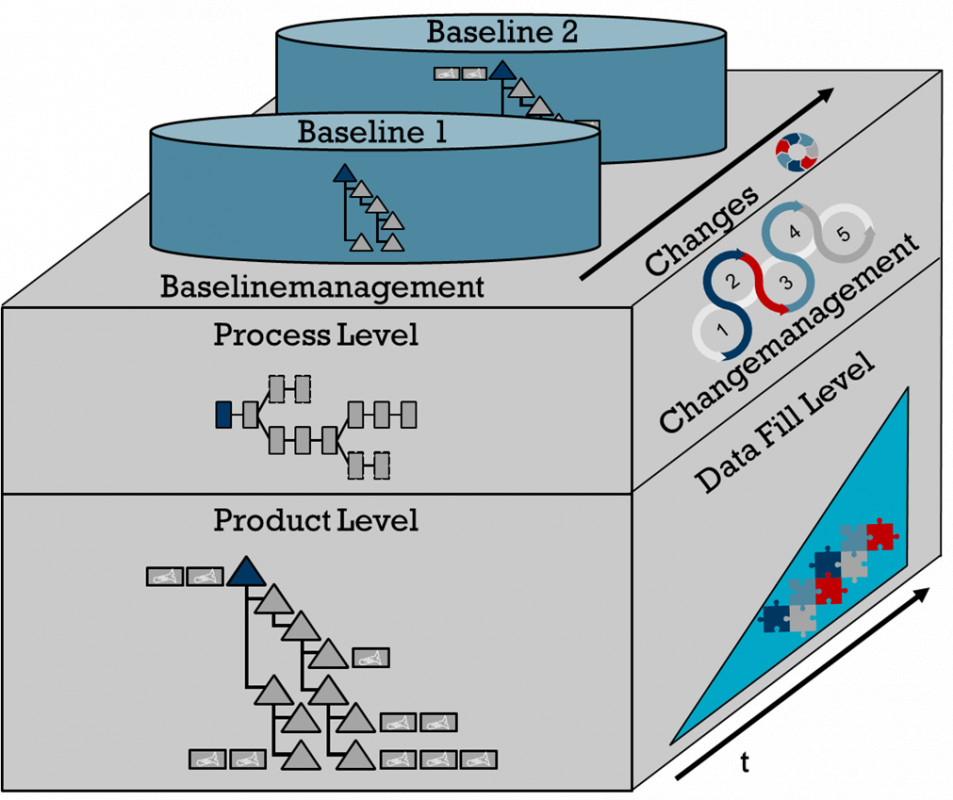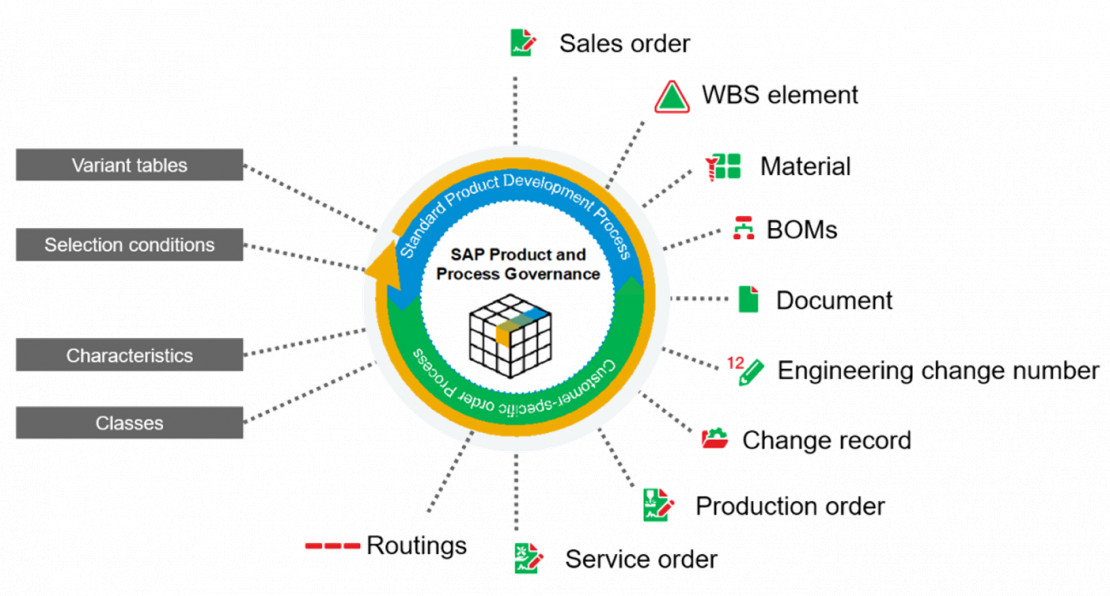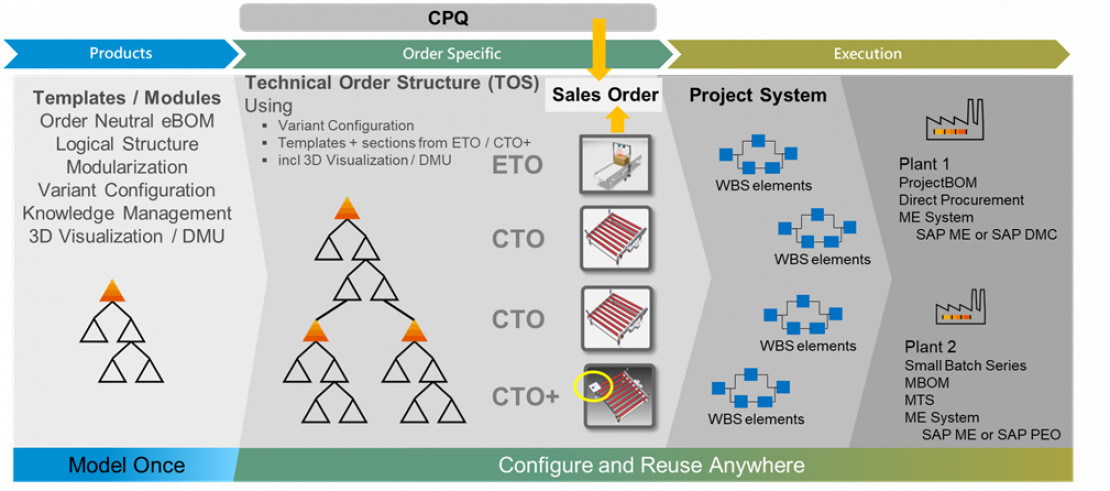05.11.2024
The configuration unit
In the last two articles, Maximilian Böttge (Profit Center Manager PLM at BDF EXPERTS) discussed the benefits of configuration management for manufacturing companies in the transition from ETO to CTO (+) and for operators of machines and systems. There I also repeatedly referred to the configuration unit, which I would like to take a closer look at today.
What is a configuration unit?
The configuration unit (also called configuration element or artifact) is the central entity in configuration management. It forms the linking point for a number of related work results. It is also the starting point for the product creation and product maintenance process of relevant processes. It is subject to integrated change and baseline management.

Data and process object Configuration unit
The configuration unit not only combines data information, but also serves as a starting point for the processes. It therefore centralizes the original configuration management tasks:
- Planning: The configuration unit is the starting point for the configuration management process. It serves as a planning object for information to be compiled (e.g. metadata classification) and objects (e.g. documents and material masters) as well as for recording results.
- Management: The configuration unit is the central management object. It collects the data and makes it available as required. The data status changes over time. Integration into change management and release processes means that its status can always be displayed transparently.
- Control: Change and release processes are controlled on the basis of the configuration unit. The inclusion of the configuration unit in baselines for certain milestones (e.g. PDR, CDR, PRR) is also controlled here in order to map the various statuses.
- Workflows and processes: The configuration unit is the central starting point for processes and workflows from a product and project perspective. In particular, processes from change, release, version, release and module management should be mentioned.
Configuration unit as a spider in the web
In order to fulfill its intended tasks, the configuration unit must be linked to various master and process objects as well as master and process information. We generally distinguish between two states of the configuration unit:
- Neutral configuration unit: The neutral configuration unit only contains neutral, and therefore non-project-related, information. It is the reference point for release for reuse across projects. The neutral configuration unit can combine several logistically different but structurally identical materials (e.g. different surface finishes).
- Use of the configuration unit: The use of the configuration unit offers the option of storing project and installation location-specific information. The release refers to the use of the configuration unit in the project at exactly this point. The material selection is reduced to one material used.
Depending on its status, the configuration unit therefore combines different data.

In order to enable the maximum integrated reuse of a configuration unit, not only purely constructive data such as eBoM, constructive material masters and change numbers from the design process are combined, but the data pool is expanded in the direction of logical processing by means of logistical material masters (1:n constructive to logical material masters), work plans, production orders, controlling objects and orders, right up to the mapping of the actual status via technical locations and equipment. (See also Hybrid construction kits by Prof. Dr. Jörg. W. Fischer)
Use of the configuration unit in the project management process
The configuration unit can be used in the project management process. Under the term Model Once - Configure and Reuse Anywhere, we recognize the central benefit of the configuration unit. After release for reuse, the neutral configuration unit can be used in a project by using the configuration unit. There, classic project management processes ETO, CTO and CTO+ can be used. This use also enables project-specific adaptation and expansion without jeopardizing the integrity of the neutral configuration unit. Due to the different release types,
- Releases neutral configuration unit: release for reuse
- Release of the use of the configuration unit: Release of the project-specific use and its project-specific adaptation
the status of the configuration unit and its use is always clearly separated and transparently displayed. Nevertheless, the connection between the neutral configuration unit and the use of the configuration unit means that project-specific adjustments can be incorporated into a revision of the neutral configuration unit in a controlled manner and product-related problems that arise in the project can be passed on to product maintenance in a controlled manner.

Maximilian Böttge - Profit Center Manager PLM at BDF EXPERTS



